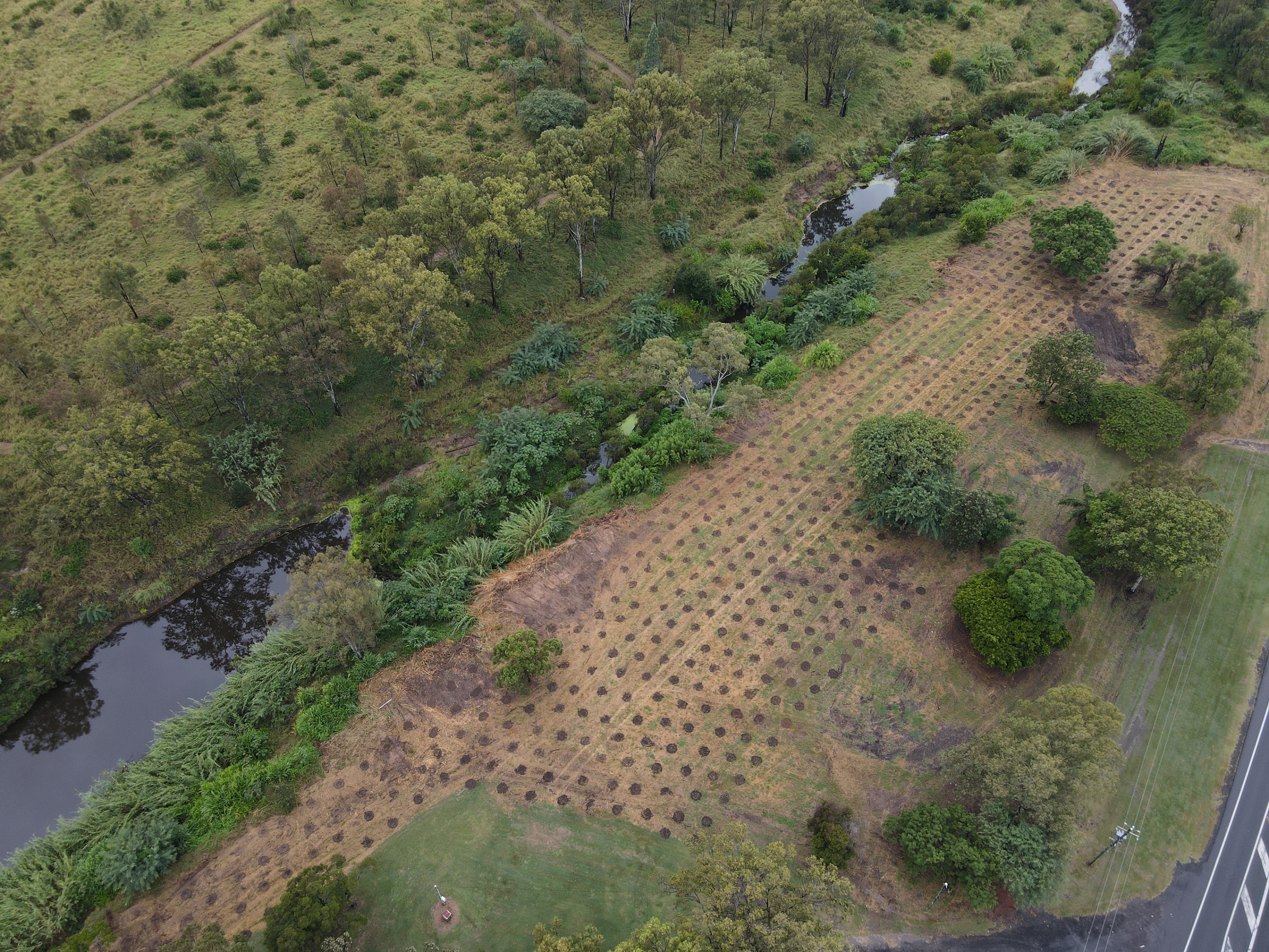More than 700 trees planted in Lower Tenthill revegetation project
An infant forest has been established on flood affected land at Lower Tenthill in a move to stabilise a critical section of Lockyer Creek and restore native habitat.
Once mature, the seedlings will create a healthy forest community that offers the best resilience against the devastating impacts of flooding and climate change, Environment Portfolio Councillor Cheryl Steinhardt said.
“With the help of local environmental groups and community members, we planted 750 native seedlings near Lions Park late last month, which will have widespread benefits for native fauna, improve our flood resilience and provide extra greenspace for the Lockyer Valley to enjoy,” she said.
“The project site was once home to two properties recently bought back under the jointly funded Commonwealth and State Government Voluntary Home Buy-Back (VHBB) program. Those previously flooded houses have now been removed and in their place we’ve created new homes for our diverse wildlife.”
Cr Steinhardt said the revegetation performed the ideal function during major floods - slowing the water velocity but not influencing flood heights – and was the method recommended by specialist hydrologists.
“The trees, which were planted at the top of the bank, will only get engaged during large flood events,” she said.
“At that time, there is so much water that flood heights aren’t impacted by the trees (upstream or downstream) but the velocity is slowed. This in turn protects creek banks and agricultural land.
“In addition, the channel will be planted with grasses and shrubs that bend over in floods, reducing velocity but not the capacity of the channel to carry the flood water.”
Taking place on Sunday, 21 April, the Community Tree Planting Day was delivered through Council’s membership of the Resilient Rivers Initiative, a Council of Mayors (SEQ) project, in collaboration with, and with the assistance, of Greening Australia.
Cr Steinhardt said a total of 51 species were planted, with about 20 per cent of the total seedlings being gum trees.
“A mix of tall and small trees and shrubs were planted on the day, and the planting will support and protect the huge remnant blue gum trees that are present on the site,” she said.
“This will help restore an endangered regional ecosystem and provide essential habitat for koalas, which have been spotted less than one kilometre away.
“The trees will also create new homes for gliders, possums, other small mammals, reptiles, insects and a wide range of bird species.”
The area will be maintained intensively by Council for five years with funding from the Resilient Rivers Initiative, after which time a fully functioning forest is expected to be in place requiring minimal upkeep.
The site will also serve as an essential link to the already-revegetated areas downstream on Lockyer Creek. These include, Parklea Reserve, Placid Hills and William Kemp Park, Beavan Street, and Cahill Park, Gatton.
Another major planting project is planned for the banks of Lockyer Creek at the Gatton Racecourse later in the year.
The VHBB program is jointly funded by the Commonwealth and State Governments under the Disaster Recovery Funding Arrangements, as part of the $741 million Resilient Homes Fund.


